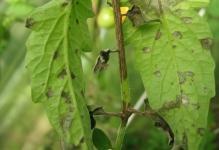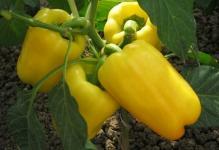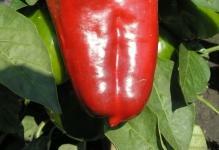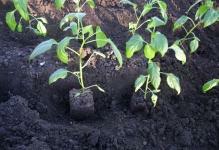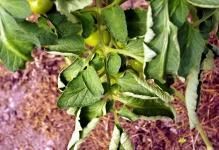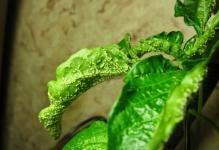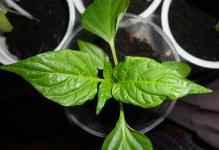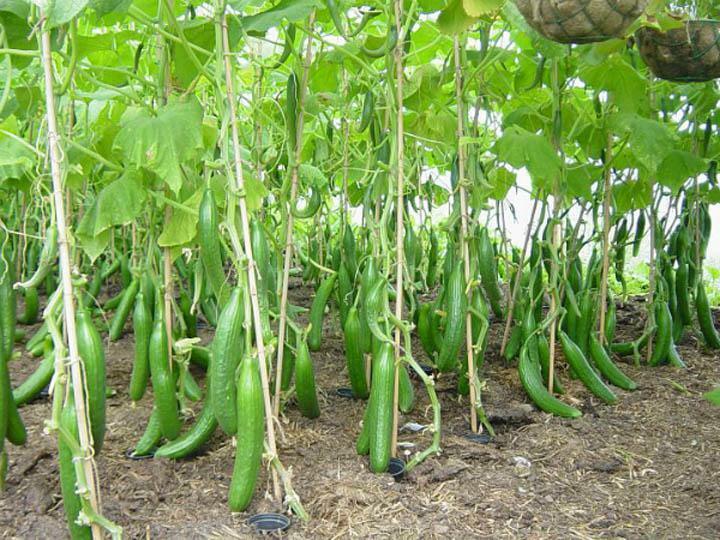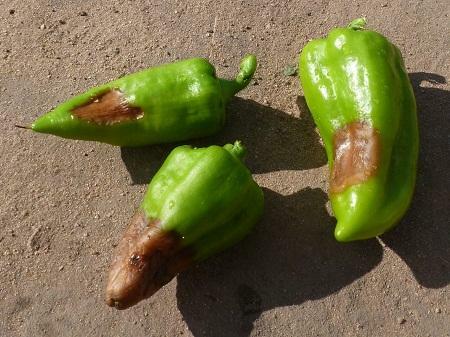 If the pepper is rotting in the greenhouse, then this indicates an incorrect care. Pepper is a demanding plant. Improper care of the plant can lead to the fact that the seedlings will wither and dry, the flowers will fall off, and the fruits will begin to rot. The cause of this are pepper diseases or the appearance of harmful insects.
If the pepper is rotting in the greenhouse, then this indicates an incorrect care. Pepper is a demanding plant. Improper care of the plant can lead to the fact that the seedlings will wither and dry, the flowers will fall off, and the fruits will begin to rot. The cause of this are pepper diseases or the appearance of harmful insects.
-
- Aphid pepper in the greenhouse: the causes of the onset and treatment
- The main diseases of pepper in the greenhouse and their treatment
- Why rotting pepper in the greenhouse: the causes of the problem
- Non-infectious diseases of pepper in the greenhouse
- WhyDo not blush the peppers in the greenhouse: the causes of
- Because of what the pepper rots in the greenhouse( video)
- Examples of pepper diseases in the greenhouse( photo)
Aphid pepper in the greenhouse: the causes of the appearance and treatment of
Many farmersMore than oncelkivalis such pests as aphids on vegetable crops. When growing peppers aphids also attack the plant, sucking the juice out of it, slows the development of seedlings. After the appearance of aphids on peppers, the leaves of the plant twist, dry and eventually fall off, leaving a bare stalk and twigs without leaves.
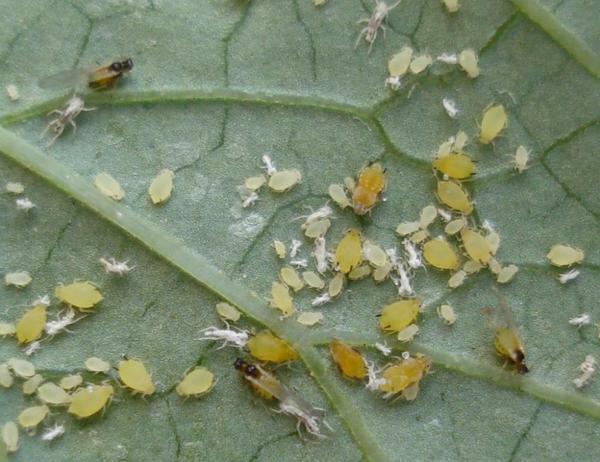 Start fighting the aphids when the first specimens are found, as it can destroy the crop.
Start fighting the aphids when the first specimens are found, as it can destroy the crop. Among many vegetables, aphids prefer peppers because of the high juice content in the plant that feed aphids and lay eggs on the back of the leaf.
Symptoms of pest infestation:
- Dried and twisted pepper leaves;
- Appearance of waste from the life of aphids;
- Sticky and shiny leaves;
- You can consider adult pests and their eggs laid on the inside of the leaf.
Fighting aphids is not easy - you can get rid of pests with chemical, biological, folk and mechanical methods. In the conditions of growing pepper in a greenhouse biological methods are not quite suitable. Their role is to attract birds or ladybirds to eat aphids from affected plants. It is easier to do this on open beds!The mechanical method is based on manual collection of insects and careful washing of eggs and padi from plants.
Unlike caterpillars that leave holes in leaves, aphids are less noticeable.
The most safe for human and necessary insects is the "Fufanon".Thanks to the "Actellik" preparation, pepper will get rid of harmful insects, it will only be necessary to wash them off with water.
Control of aphids by folk methods involves spraying plants with a soap solution. Forming a protective layer, laundry soap does not allow pests to settle again on the leaves. Experienced gardener believe that if onions and garlic grow near the pepper bush, their strong odor is able to decay aphids.
The main diseases of pepper in the greenhouse and their treatment
Even in greenhouses sweet peppers are exposed to diseases, although they attack the plant quite rarely. That pepper grew and developed, yielded a good harvest, it is necessary to alternate alternate seeding sites every year.
The fight against diseases of greenhouse plants is a constant observation of the growth and development of vegetable crops.
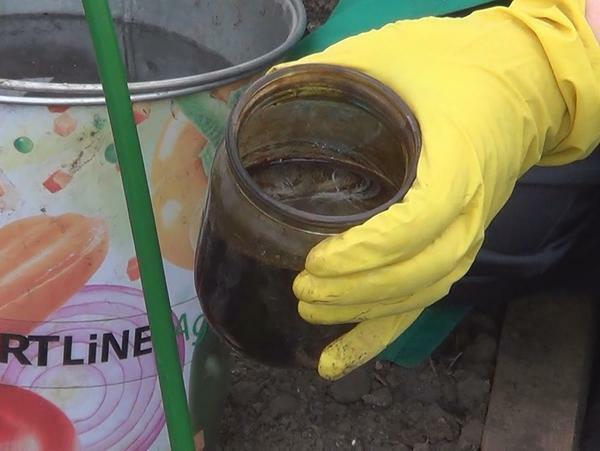 To treat pepper in a greenhouse it is possible both folk and traditional means
To treat pepper in a greenhouse it is possible both folk and traditional means
In general, pepper diseases can be determined by appearance and immediately begin treatment of the plant.
Possible diseases of peppers:
- Late blight. Leaves, stems and fruits are affected - dark spots appear with a white coating. The leaves dry, and the fruits rot. This disease is treated by spraying with special preparations containing copper - Barrier, Barrier. While the peppers do not bloom, you can use Oxihom as a prophylaxis.
- White rot. Stems of pepper are affected, the fruits become soft and slightly loose. At the first signs of the disease, crushed chalk and coal can be used. Powder is covered with infected areas, after which the plants are poured with slightly warm standing water.
- Dry vertex rot. Appears during the growth of culture. On the top of the pepper there are specks, after which the green leaves begin to dry. To prevent the disease, plants are sprayed with chloride or calcium nitrate.
- Black bacterial blotch. May damage the plant in the very first stages of growth. During this period, it will be very difficult to save seedlings from the plague, the infection is tenacious and can live in seeds for up to 10 years. Therefore disinfection of seeds and disinfection of soil is the only way to prevent disease.
- Infectious diseases. May occur if the pepper seedling is not properly maintained. Lack of calcium, potassium, magnesium or boron can lead to falling flowers, twisting the leaves, changing the color of the fruit.
Any disease, both human and plant, is easier to prevent than cure. Disinfection of the soil, proper care for seedlings, maintaining comfortable temperature and humidity, frequent replenishment of plants - simple conditions will help to save the harvest from diseases and pests.
Why rotting pepper in greenhouses: the causes of the problem
Bulgarian pepper is prone to rotting both in the ground and already assembled. Rotting pepper on the garden bed in the open ground or in the greenhouse is the cause of pests or certain diseases.
So why is rotting pepper?One of the main problems may be incorrectly selected soil for seedlings. A good soil should consist of humus, peat and sand.
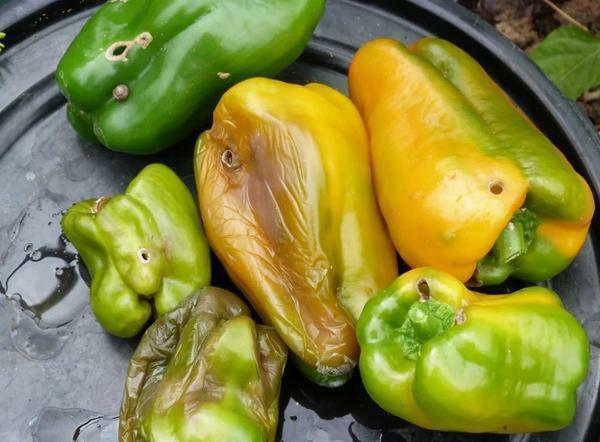 If the pepper is rotting in the greenhouse, then perhaps you are watering it too often
If the pepper is rotting in the greenhouse, then perhaps you are watering it too often
High humidity and frequent watering can also provoke the appearance of rot on the plant and fruits.
If pests have appeared in the greenhouse - aphids, slugs, caterpillars, they can also lead to diseases, respectively, to further decay.
Causes of rotten pepper:
- Fungal disease black leg. Strikes pepper shoots because of insufficient illumination and high humidity of air in the greenhouse. Adult plants are affected by fungus due to poor feeding.
- Fusarium. When the disease turns yellow, the lower part of the leaves of the plant, then falls off. If you do not start treatment on time, the disease can go to closely planted plants.
- Vertical wilting. The main signs are yellow leaves and the top of the plant wilt. All infected plants need to be cleaned and treated with soil "Trichodermina".
- Gray rot. Appears when soil moisture is disturbed. Treatment will only be effective immediately after infection. Plants should be treated with Kuproskat, and the soil should be decontaminated with a solution of potassium permanganate.
To prevent rot of peppers, you need to protect them from diseases as much as possible. For this, before planting, the soil must be disinfected, and the seeds should be kept in a special disinfecting solution.
Non-infectious pepper diseases in the greenhouse
These diseases are safer than bacterial, cause less damage to crops and do not infect nearby plants. Their appearance was provoked by the failure to follow the rules of care for pepper seedlings.
During the whole vegetation period, the seedlings need warmth, good watering, top dressing and sunlight.
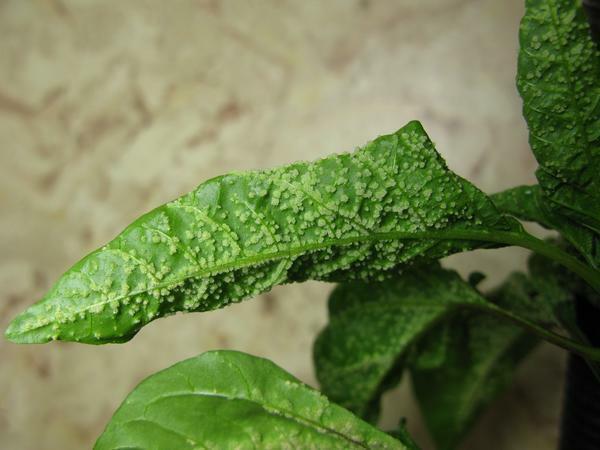 Before you start treatment for a disease of pepper, you should watch the training video and learn the advice of specialists
Before you start treatment for a disease of pepper, you should watch the training video and learn the advice of specialists
The lack of nutrients can lead to a disease of culture and a decrease in yield.
The disease can be provoked:
- Nitrogen is needed for the full development of plants and fruits. Its shortage leads to a decrease in inflorescences, a rare ovary, yellowing and withering of leaflets. The ovary dries and falls off. To correct the situation, you need to feed fertilizers.
- In the absence of phosphorus, the leaves and stem of the plant become violet. The lack of this substance can be corrected by adding special solutions to water for irrigation.
- For growing a large fruit you need potassium. Its lack leads to wilting, sagging and falling leaves.
- If the fruit is tied and soon rot, there may not be enough boron.
High temperatures and excessive soil moisture can also lead to the rotting of pepper, so the crops should be constantly monitored.
Why the peppers in the greenhouse do not blush: the reasons for
Perhaps the reason lies in the sweet pepper variety?Not all ripe fruits should be red, there are varieties of yellow, green, purple. Making sure that the variety is still red, you need to look for a different reason.
Peppers in the greenhouse may not blush due to the lack of nutrients in the ground
For northern regions and the middle band, it is recommended to grow early varieties of sweet and bitter peppers. Hybrid medium-ripening varieties are suitable for mild climatic conditions.
Peppers hybrids are more resistant to temperature changes and many diseases and pests.
When growing sweet peppers, two degrees of maturity of the fetus - technical and biological - should be considered. Technical maturity - peppers have grown to the right size. Biological - acquires a color( red, orange).Therefore, do not rush to tear off the fruit, as soon as they have grown, you need to wait about 3-4 weeks before full maturation.
Because of what the pepper rots in the greenhouse( video)
Plants that grow in the greenhouse require careful care. If the leaves turn yellow and begin to crumble, the pepper does not bloom and the ovary falls, the pests attack or rot the fruits, the paprika bush needs treatment and care. It is better to use biological preparations that do not harm the plant and the person.

